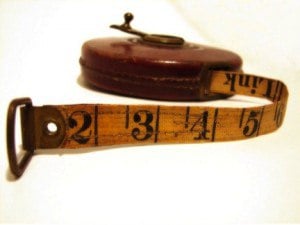What's the point of getting the best help-desk software if you don't track its effectiveness?
 If you perform any type of customer service, your goal should be to help your customers be successful. Especially in today's Yelpified-social media saturated world where word of mouth marketing and customer loyalty can make or break you.
If you perform any type of customer service, your goal should be to help your customers be successful. Especially in today's Yelpified-social media saturated world where word of mouth marketing and customer loyalty can make or break you.
But how do you know that what you are doing is really helping your customers be successful? How can you tell that your best tools and help-desk software are really improving the overall quality of your customer service?
Coming up with the right metrics, and then being able to effectively track those metrics, can be tricky. But you need to do it, otherwise you'll never be sure whether your investment in getting the best customer service tools is really paying off.
So to help you get the brain juices flowing, we had Ashley Verrill write a guest post to share some insight as to how Zappos (the e-retailer that has become renowned for its customer care focused culture) tracks and measures its performance metrics. Now you might not want to use the same metrics as Zappos - that's not the point. The point is that they came up with some unique performance metrics that helped them focus on their goals, and you need to do the same.
Ashley's company, Software Advice, had a chance to ask one of Zappos' loyalty managers how they track and measure their customer-centric strategy. Zappos shared 4 performance metrics they use to drive productivity and incite emotional connections with the customer:
1 - Monitor Total Interaction Time, Not Call Quantities
Instead of valuing quick time to resolution or processing high call volumes, Zappos looks at the percentage of a time an agent spends on the phone.
Agents are expected to spend at least 80 percent of their time in customer-facing communications. This measure – called personal service level – is a way to empower the team to utilize their time how they see will best promote customer loyalty.
2 - Quantify Wow Moments
Zappos measures calls against a 100-point scale called the “Happiness Experience Form.” CSRs are expected to keep a 50-point average or higher. If they fall below that line, they receive extra training. This scale is based on answers to the following questions:
- Did the agent try twice to make a personal emotional connection (PEC)?
- Did they keep the rapport going after the customer responded to their attempt?
- Did they address unstated needs?
- Did they provide a “wow experience?”
3 - Zero in on Idle Chats
Zappos monitors “abandonment time,” or periods when an agent has a session open even though the customer already disconnected from the chat.
This strategy of looking for idle chats zeroes in on the cause of unproductivity. When agents aren’t productive, customers wait longer. And the longer they wait, the more apt they are to abandon the session.
4 - Reward Perfect Attendance and Punctuality
Zappos uses a program called Panda to combat absenteeism. Employees receive a point for every day they miss work or come in late. Staff with zero points in a given period receive a varying number of paid hours off. These hours can be accrued and stacked for an entire paid day off, Carder explains.
The key take away is that Zappos created metrics that emphasize relationship building over rushing the customer off the call. At the same time, these KPIs still successfully improve performance and make employees feel appreciated and rewarded.
So are those the right metrics for you? Maybe... maybe not. You need to reflect on what your goals are, and then define how you're going to measure whether you're getting there or not. Otherwise, you'll never know whether all of your great help-desk software/customer service tools are helping you accomplish what you've set out to do.
About jdevore
Jonathan (Jay) DeVore is the Director of Marketing at Blue Mango Learning Systems, developers of ScreenSteps. He graduated from Brigham Young University with a BS in Accounting, and is a licensed CPA in the state of Virginia. Right after graduation, he worked for his dad's private medical practice in Pasadena, CA auditing the efficiency of billing and collections. After 9 months of living in the golden state, he moved his family to Virginia to begin working at PricewaterhouseCoopers (PwC). As an accountant at PwC, he actually did very little number crunching (which surprised him), and instead audited government information systems for compliance with government requirements (e.g. NIST 800-53). During his time with the Big 4 Accounting Firm, he helped large organizations improve their documentation both from a compliance perspective and instructional perspective. His favorite aspect of work was training/teaching, so when Greg and Trevor approached him with an opportunity to create educational content for ScreenSteps, he jumped at the chance. Jonathan lives in Northern Virginia with his wife and children, and enjoys the beautiful weather the D.C. area offers 9 months out of the year.


